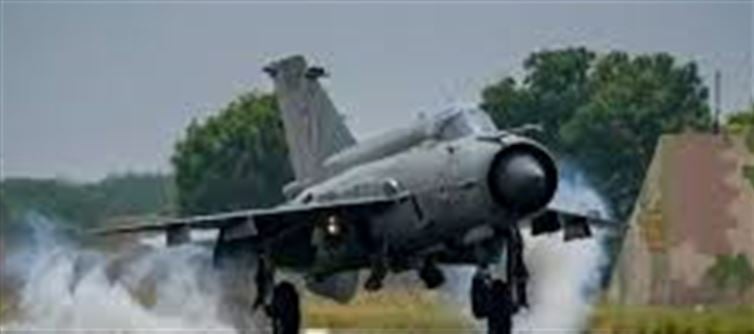
The Indian air Force (IAF) is accelerating its long-awaited plan to acquire 114 Rafale fighter jets as part of the Multi-Role fighter Aircraft (MRFA) program, estimated to cost Rs 2 lakh crore (approximately $22 billion). However, this ambitious acquisition comes amid challenges related to the “Make in India” initiative and resistance from Western suppliers. To counter these hurdles, Russia is stepping in with potential solutions that could offer a significant strategic advantage.
1. The MRFA Program: A Game-Changer for IAF
The MRFA program is one of the most important defense initiatives for India’s military modernization. It aims to acquire 114 fighter jets with the capability to perform multi-role operations—such as air superiority, ground attack, and reconnaissance. This will enhance the IAF’s combat readiness and strategic deterrence in a region marked by rising geopolitical tensions, especially with neighboring china and Pakistan.
2. The "Make in India" Factor: Western Resistance
The Indian government has been pushing for a significant portion of these fighter jets to be manufactured locally under its “Make in India” initiative. This would not only bolster India's defense capabilities but also boost its domestic aerospace industry. However, many Western suppliers, including Dassault Aviation (which makes the Rafale) and other european and U.S.-based manufacturers, are reportedly resistant to this demand.
The reluctance to embrace local manufacturing stems from intellectual property concerns, supply chain complexity, and quality control issues. Western companies often have reservations about transferring advanced technology to india due to national security concerns and the proprietary nature of the designs.
3. Russia’s Support: Offering a Solution
As the West hesitates, Russia could provide a timely solution. russia has long been a strategic defense partner for india, with decades of collaboration in military aircraft, missiles, and air defense systems. Russian fighter jets, such as the Su-30MKI, have been successfully integrated into the IAF’s fleet, and there is growing speculation that russia could offer a more flexible and cost-effective approach to meet India's defense needs.
Here’s how russia might help:
· Transfer of Technology: Unlike Western suppliers, russia has historically been more willing to share technology and collaborate on joint manufacturing. This could facilitate the local production of aircraft in india, aligning with the Make in India initiative.
· Su-57 fighter Jet: russia has already offered its Su-57 fifth-generation fighter jet as a potential candidate for the MRFA program. The Su-57 is seen as a competitor to Western fifth-generation jets like the F-35 and offers advanced stealth, agility, and multi-role capabilities. If india were to enter a partnership for its production, it could not only strengthen the IAF but also position india as a global player in next-gen fighter technologies.
· Enhanced Negotiations: russia has a proven track record of defense deals with india that benefit both parties. The Russian government's willingness to negotiate terms that cater to India’s needs—such as co-production and technology transfers—could make their offers more appealing, especially in light of Western reluctance.
4. Challenges and Strategic Considerations
While Russia’s involvement could provide a solution, there are still some key considerations:
· Integration with Existing Fleet: The IAF already operates a significant number of Russian-made aircraft (like the Su-30MKI and MiG-29), which means introducing new Russian aircraft could pose challenges in terms of interoperability and logistical support.
· Geopolitical Implications: india has strong defense and strategic ties with both Western powers and Russia. A deeper partnership with russia could potentially strain relationships with the West, especially given the growing defense ties between the U.S. and india under the Quad alliance.
· Long-Term Dependence on Russian Technology: Although Russia’s aircraft are known for their robust performance, india may eventually face challenges related to long-term sustainability and maintenance of these platforms, given the rapid technological advancements in aviation.
5. What’s Next for the MRFA Program?
The MRFA program has already seen delays, but India’s need for modern fighter jets is urgent. With both China’s military advancements and Pakistan’s growing defense capabilities, india requires cutting-edge aircraft to maintain its air superiority. As india continues to review its options, the involvement of Russia may prove to be a viable solution, especially if Western companies remain resistant to local production demands.
· Decision Timeline: It’s expected that the indian government will soon make its decision on the selection process for the 114 fighter jets. The timeline for delivery and the final choice of supplier will have significant implications for India’s defense posture in the years ahead.
6. Conclusion: A Balancing Act
India’s defense procurement strategy remains a complex balancing act between embracing self-reliance and maintaining strong international defense relationships. As Russia steps in to offer alternative solutions, it will be interesting to see how the indian air Force navigates the challenges of balancing domestic manufacturing with global partnerships. The ultimate goal remains clear: to modernize the IAF and ensure that India’s air dominance remains unchallenged.
Disclaimer:
The views and opinions expressed in this article are those of the author and do not necessarily reflect the official policy or position of any agency, organization, employer, or company. All information provided is for general informational purposes only. While every effort has been made to ensure accuracy, we make no representations or warranties of any kind, express or implied, about the completeness, reliability, or suitability of the information contained herein. Readers are advised to verify facts and seek professional advice where necessary. Any reliance placed on such information is strictly at the reader’s own risk..jpg)




 click and follow Indiaherald WhatsApp channel
click and follow Indiaherald WhatsApp channel